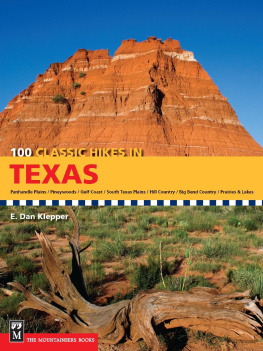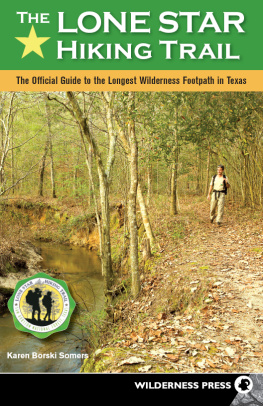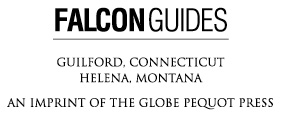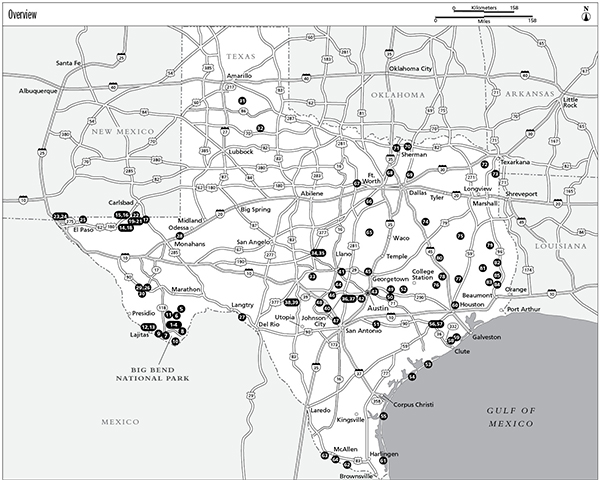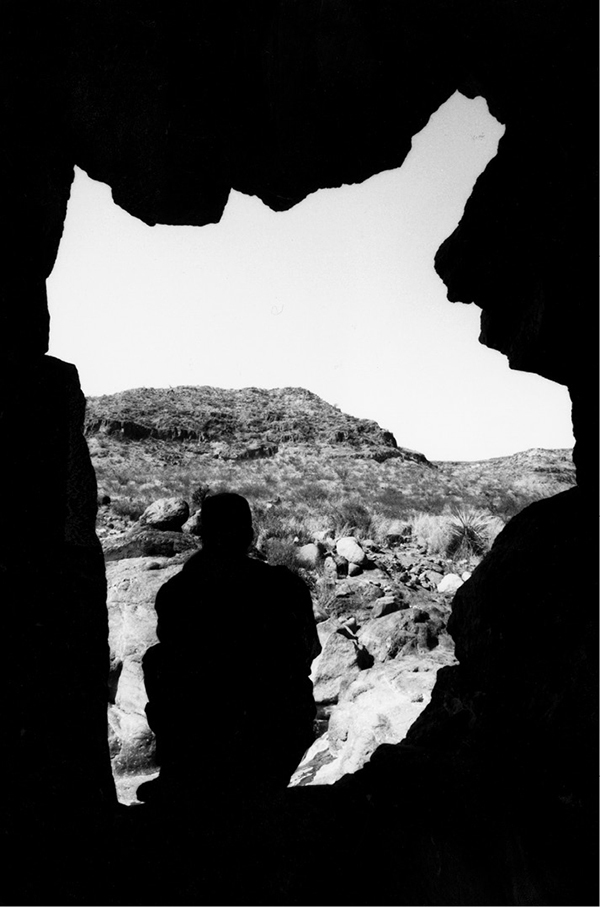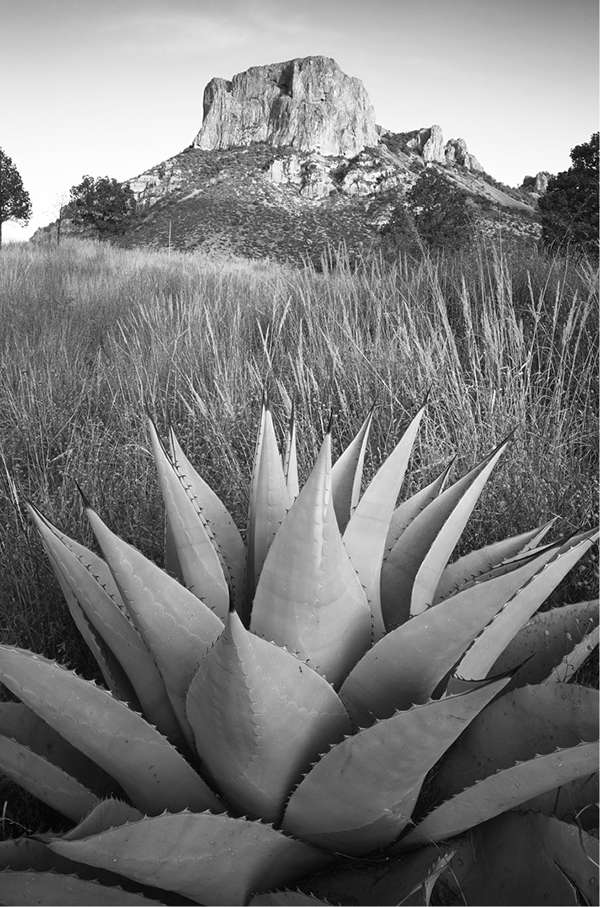Hiking Texas
A Guide to 85 of the States Greatest Hiking Adventures
Second Edition
Laurence Parent
HELP US KEEP THIS GUIDE UP TO DATE
Every effort has been made by the author and editors to make this guide as accurate and useful as possible. However, many things can change after a guide is publishedtrails are rerouted, regulations change, techniques evolve, facilities come under new management, and so on.
We would appreciate hearing from you concerning your experiences with this guide and how you feel it could be improved and kept up to date. While we may not be able to respond to all comments and suggestions, well take them to heart, and well also make certain to share them with the author. Please send your comments and suggestions to the following address:
The Globe Pequot Press
Reader Response/Editorial Department
P.O. Box 480
Guilford, CT 06437
Or you may e-mail us at: editorial@GlobePequot.com
Thanks for your input, and happy trails!
This book is dedicated to my wife, Patricia, who accompanied me when she could but more often patiently endured my long absences.
Copyright 1992, 2009 by Morris Book Publishing, LLC
ALL RIGHTS RESERVED. No part of this book may be reproduced or transmitted in any form by any means, electronic or mechanical, including photocopying and recording, or by any information storage and retrieval system, except as may be expressly permitted in writing from the publisher. Requests for permission should be addressed to The Globe Pequot Press, Attn: Rights and Permissions Department, P.O. Box 480, Guilford, CT 06437.
Falcon, FalconGuides, and Outfit Your Mind are registered trademarks of Morris Book Publishing, LLC.
Interior photos by Laurence Parent
Text design: Nancy Freeborn
Project manager: Julie Marsh
Layout artist: Maggie Peterson
Maps: Sue Murray Morris Book Publishing, LLC
Library of Congress Cataloging-in-Publication Data
Parent, Laurence.
Hiking Texas, 2nd : a guide to 85 of the states greatest hiking adventures / Laurence Parent. -- 2nd ed.
p. cm.
ISBN 978-0-7627-9734-9
1. Hiking--Texas--Guidebooks. 2. Trails--Texas--Guidebooks. 3. Texas--Guidebooks. I. Title.
GV199.42.T49P39 2009
917.6404'64--dc22
2009022539
The author and The Globe Pequot Press assume no liability for accidents happening to, or injuries sustained by, readers who engage in the activities described in this book.
Contents
ACKNOWLEDGMENTS
Sienna Jones helped immensely with organizing the fact checking for the revised edition. Several friends joined me for some of the hikes, Jo Lou Young in particular. Rick LoBello, Tom Alex, Larry Henderson, Chuck Boettcher, and Paula Rivers helped with suggestions, corrections, and research. Several people helped with information and map research, including Bill Anderson, David Baxter, Jim Carrico, Marie LeMond, Jennifer Owen, Tommy Powell, Joshua Rose, and June Secrist. Terri Eaton, Kent and Beth Brock, Candice Caperton, and Patsie and James Caperton all offered me their hospitality during my travels. My gratitude also goes to the many other people, such as Sara Dishman and Lora Hufton, who helped in ways big and small.
Special thanks go to Malcolm Bates, Bill Schneider, and the other people of Falcon Press who initially gave me the opportunity to compile these great Lone Star hikes. And thank you to Julie Marsh and Maggie Peterson and others at FalconGuides, for their invaluable assistance on this updated edition, which presents the best of the Texas outdoors.
A world of hiking opportunities awaits hikers in Texas. This man takes a rest in a cave at the mouth of Rancheras Canyon.
Hiking in Texas, an Introduction
Texas forms an enormous bridge between east and west, from the Deep South on the Louisiana border to the Old West in El Paso. Follow I-10 for the 855 miles from El Paso to Orange and you pass from the arid mountains and basins of the Chihuahuan Desert to the lush, fetid bayous of the Big Thicket. The change from north to south is no less extreme. On a given winter day, residents of Brownsville may be sweating in the citrus groves of the Rio Grande Valley while Amarillo shivers under 2-foot drifts of snow.
People unfamiliar with the state often believe that Texas is little more than flat desert, grazed by underfed cows and dotted with oil wells. However, Texass tremendous size and wide elevation range create a surprising variety of climates, vegetation, and terrain. East Texas receives 50 or more inches of rain annually and is covered with a mosaic of lakes and rivers. Bald cypresses and water tupelos line the swampy bayous, while dense pine forests blanket the uplands. Spanish moss festoons the live oaks, while fragrant magnolia blossoms perfume the air.
A visit to West Texas will convince skeptics that Texas is far from flat. Texas may not have the high elevations common in the western states, but the highest point, Guadalupe Peak, still reaches a respectable 8,749 feet. Its steep slopes and sheer cliffs tower a vertical mile above the salt flats at its base. Numerous other mountain ranges pepper West Texas, with many peaks reaching 7,000 feet or more.
Live oaks and junipers cloak the rolling terrain of the Hill Country, in the center of the state. Crystal-clear streams tumble down canyons cut through the limestone plateau. Secret places lie hidden in the folds of the hills: the fiery red maples of the deep canyons of the Sabinal River, the labyrinthine Caverns of Sonora, the pink granite dome of Enchanted Rock.
The Panhandle also guards its secrets. The Canadian River breaks the endless flat plain into a series of slopes and gullies. The Prairie Dog Town Fork of the Red River cuts an 800-foot-deep gash known as Palo Duro Canyon. Gnarled junipers cling to the red-and-ocher slopes of the canyon. Hidden side canyons and eroded pinnacles belie the stark treeless plains above.
An agave grows below Casa Grande, one of the most notable peaks in the Chisos Mountains of Big Bend National Park.
Elevation, the presence of the Gulf of Mexico, and the sheer size of the state largely control climate in Texas. The Gulf provides a moisture source and moderating influence on the coastal areas of the state. Overall, Texas is a warm state because of its low latitude and generally low elevations. However, the Panhandle, because of its far northern reach, and the mountains of West Texas get at least a few short-lived snows every winter.
The state is noted for the diversity of its weather. No mountains block the flow of cold fronts from Canada in winter, so occasional northers interrupt the warm weather and bring surprising cold spells even in the southern part of the state. The northers sweep in suddenly, dropping temperatures 30 or 40 degrees overnight. Historical temperature extremes in Texas run an incredible range, from -23 degrees to 120 degrees Fahrenheit.
Next page

